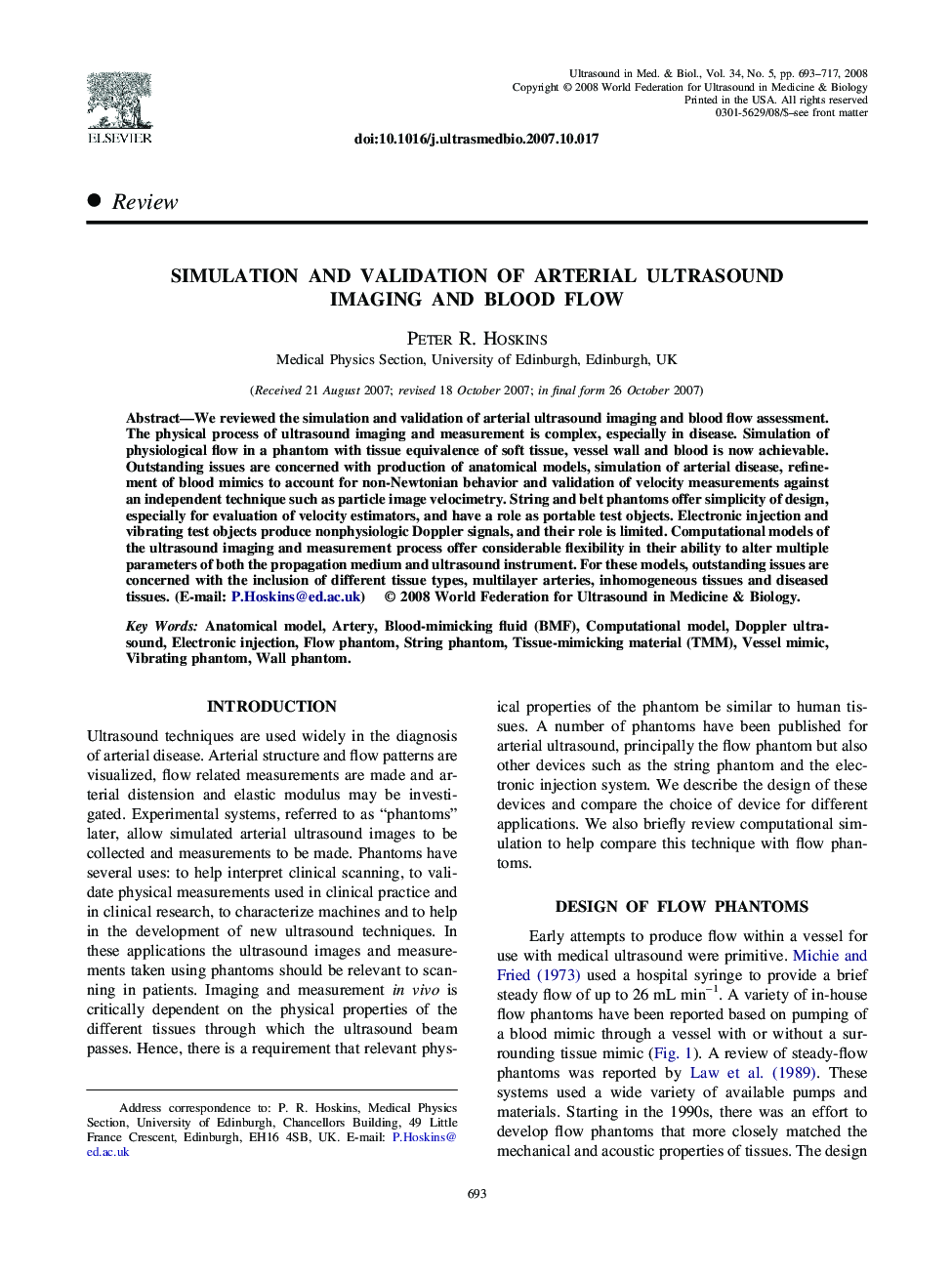| Article ID | Journal | Published Year | Pages | File Type |
|---|---|---|---|---|
| 1762579 | Ultrasound in Medicine & Biology | 2008 | 25 Pages |
Abstract
We reviewed the simulation and validation of arterial ultrasound imaging and blood flow assessment. The physical process of ultrasound imaging and measurement is complex, especially in disease. Simulation of physiological flow in a phantom with tissue equivalence of soft tissue, vessel wall and blood is now achievable. Outstanding issues are concerned with production of anatomical models, simulation of arterial disease, refinement of blood mimics to account for non-Newtonian behavior and validation of velocity measurements against an independent technique such as particle image velocimetry. String and belt phantoms offer simplicity of design, especially for evaluation of velocity estimators, and have a role as portable test objects. Electronic injection and vibrating test objects produce nonphysiologic Doppler signals, and their role is limited. Computational models of the ultrasound imaging and measurement process offer considerable flexibility in their ability to alter multiple parameters of both the propagation medium and ultrasound instrument. For these models, outstanding issues are concerned with the inclusion of different tissue types, multilayer arteries, inhomogeneous tissues and diseased tissues. (E-mail: P.Hoskins@ed.ac.uk)
Related Topics
Physical Sciences and Engineering
Physics and Astronomy
Acoustics and Ultrasonics
Authors
Peter R. Hoskins,
